
 Austria
Austria

Population: 8,054,000
Vienna, 1,593,400;
Salzburg, 505,400; Innsbruck, 115,000
Language: German.
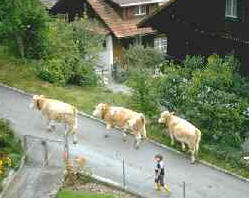 Money Matters
Money Matters
The Austrian schilling is divided into 100 groschen.
Highlights
Vienna
Vienna was built in circles. The center is dominated by St. Stephen's Cathedral.
The Staatsoper, and the Kunsthistoriches and Natural History museums are on the wide, shady Ringstrasse
Further out are two opulent palaces: Sch�nbrunn, built in the late 17th century for the Habsburgs and still used for state receptions; and Belvedere, commissioned by Prince Eugene of Savoy.
Excursions can be made from here through the Danube valley to explore ancient castles and abbeys, and to sample some of the best Austrian food and wine.
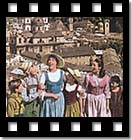 Salzburg is the birthplace of Mozart. The city pays homage with two museums and the great summer music festival. The Collegiate Church is an outstanding example of Baroque architecture, and the area in front of the church is a popular marketplace.The film Sound Of Music was filmed in this city using its wonderful scenery as locations.
Salzburg is the birthplace of Mozart. The city pays homage with two museums and the great summer music festival. The Collegiate Church is an outstanding example of Baroque architecture, and the area in front of the church is a popular marketplace.The film Sound Of Music was filmed in this city using its wonderful scenery as locations.
Innsbruck is the center of the Tyrolean Alps. Its Imperial Church is the mausoleum for Emperor Maximilian I (1458-1519). Take the cable car up nearby Mount Hafelekar for a stunning view.
Bregenz is in Vorarlberg, the smallest Austrian province and one of the loveliest. Visitors can swim in and water ski on the Bodensee (Lake Constance) or enjoy musical performances on the floating stage during the Summer Festival.
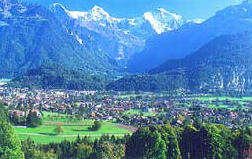 Linz was long vital for its strategic location on the Danube. Patrician houses and Baroque architecture line the largest medieval square in Europe. September brings the annual Anton Bruckner festival. Try the Linzer Torte any time.
Linz was long vital for its strategic location on the Danube. Patrician houses and Baroque architecture line the largest medieval square in Europe. September brings the annual Anton Bruckner festival. Try the Linzer Torte any time.
Graz, Austria's second-largest city, is an architectural gem, known for its noble palaces, tradition of scholarship, arts and culture with an irreverent bent and great shopping.
Entertainment
The Volksoper will present favorite Strauss operettas throughout the year, except during July and August. The Staatsoper is a must for serious opera fans. The Vienna Boys' Choir can be heard every Sunday and on religious holidays, from Jan. 1 through late June, and from mid-September to Dec. 31.
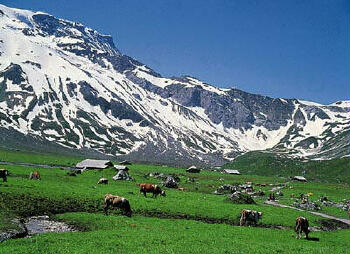 The Spanish Riding School has Sunday performances in Vienna from early March until the end of June and from the beginning of September to the end of October. Also see the Prater amusement park and ride the giant ferris wheel.
The Spanish Riding School has Sunday performances in Vienna from early March until the end of June and from the beginning of September to the end of October. Also see the Prater amusement park and ride the giant ferris wheel.
The delightful coffeehouses of Vienna and Salzburg are the spots for animated discussions.
Food & Drink
Early breakfast consists of coffee and rolls. Midmorning is Gabelfr�hst�ck, a time for a hot dish, perhaps a sausage.
Lunch is a noontime dinner. Jause, the late-afternoon refreshment, can be a feast of cakes, sandwiches and coffee. Dinner may be cold meats and a salad, with more coffee and cake later. Favorite foods include Schnitzel, Wiener Backhendl and sausages.
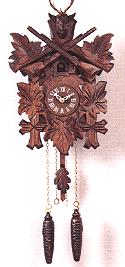 For dessert, a rich pastry, such as strudel or Sachertorte, and coffee, which is available in many versions, including: ein grosser Brauner (a large espresso with a bit of milk or cream); Melange (coffee with a lot of milk) and ein kleiner Mokka (a very small, concentrated espresso).
For dessert, a rich pastry, such as strudel or Sachertorte, and coffee, which is available in many versions, including: ein grosser Brauner (a large espresso with a bit of milk or cream); Melange (coffee with a lot of milk) and ein kleiner Mokka (a very small, concentrated espresso).
In the Grinzing district are taverns called Heurigen that serve local wines of the same name. Wineries also offer tours and tastings. A keller or a stube is a good place to meet people and sample Austrian beer.
Shopping
Handicrafts are renowned for beauty and quality, and include petit-point needlework, knitwear, loden-cloth coats and jackets, Tyrolean hats, dirndls, down quilts, hand-painted porcelain, wood carvings and dolls.
K�rntnerstrasse and Graben in Vienna are outdoor malls that house many top stores. Art lovers will find a treasure trove in antiques shops and at frequently held auctions.